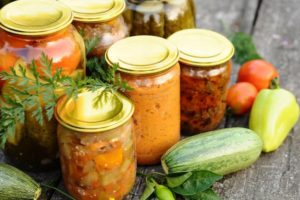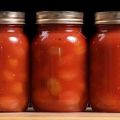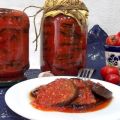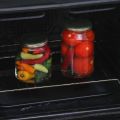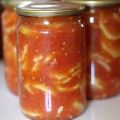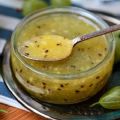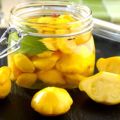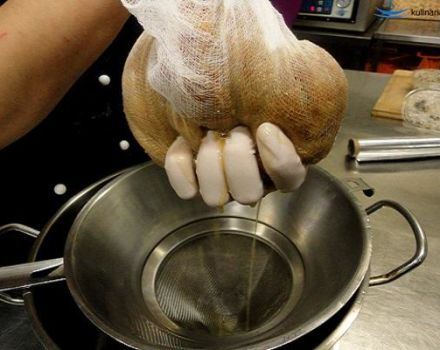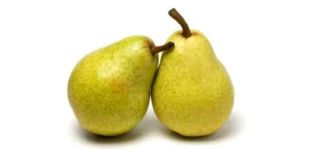TOP 10 recipes on how to make tomato paste from tomatoes at home
Tomato paste is often used during the winter, adding to vegetable soups, preparing sauces for meat dishes. You can purchase the product in the store. But housewives know how to make tomato paste from tomatoes at home so that all vitamins are preserved.
Features of cooking tomato paste
Tomato paste should contain nothing but tomatoes. Prepare the product so that it is thick. Therefore, it is necessary to leave as little liquid as possible in the pasta while cooking. You can add to the puree, in addition to salt, sugar, ground pepper. Other ingredients depend on the recipe and tastes of the hostess.
You can cook a thick sauce by rubbing tomatoes through a sieve. Then the resulting paste is suspended in a cotton bag to drain off excess juice. Another way is to boil the tomato mass to the desired consistency.
With the correct preparation of the paste, it will help to maintain normal functions of the heart muscle, strengthen bones and teeth. The concentration of lycopene in pasta is higher than in tomatoes. Therefore, it is necessary to procure this useful product for the winter.
Preparation of vegetables and containers
For the preparation of tomato paste, take medium-sized tomatoes. It is better that they are not tainted. Too soft fruits will fall apart and may impart an unpleasant taste to the paste. But unripe tomatoes will not work either, as it will be difficult for them to boil.
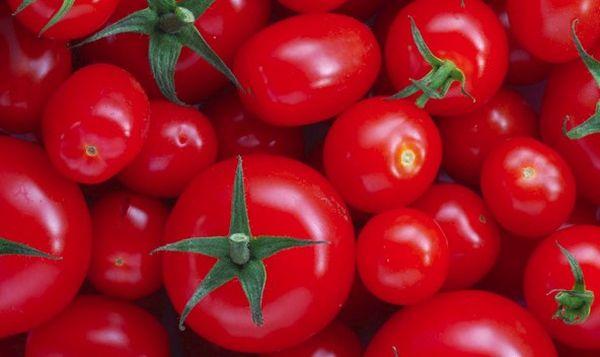
It is better to take liter cans for pasta. They are washed well. Containers should be processed with steam or scalded in the oven. For twisting, iron lids are used, which must be kept in boiling water for several minutes.
Cooking recipes
For the first time, Italians began to prepare tomato paste. They seasoned it with olive oil and garlic. Now they offer different recipes in which various devices and household appliances are used to make the sauce.
The classic way for the winter
In the usual recipe, which has become a classic, only tomatoes and salt are used in the preparation of pasta. It is better to take those fruits that have a rich red color and fleshy pulp.
You can make pasta quickly by doing:
- cutting fruit into 4-8 pieces;
- cooking in an enamel saucepan until softened for half an hour;
- rubbing through a fine metal sieve;
- boiling over low heat for 4-5 hours until thick.
While the juice is on the stove, it is constantly stirred so that it does not burn. Spoon the hot product into jars and twist.
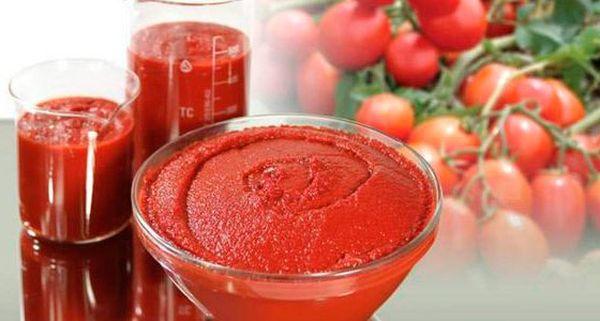
Fast way without sterilization
To shorten the cooking time and make the sauce in a less laborious way, the chopped fruits are placed in a blender and grind until smooth.
Now you need to sprinkle with salt and mix thoroughly. For 5 kilograms of tomatoes, you need to take 2 tablespoons of salt. Now pour the puree into a fine sieve or cheesecloth folded in four. Salt will push the liquid out of the tomato juice faster. After half an hour, the product will thicken. It will need to be brought to a boil, boil for 5 minutes. You get a tasty, ready-to-eat mass, which is put in jars and closed.
No vinegar
Many housewives add a little vinegar to jars so that the pasta does not deteriorate in winter. But you can save the workpiece without acid.
To get 1.5 liters of sauce, you need to take 9-10 kilograms of tomatoes. They are cut into pieces and placed in a saucepan. It is necessary to cook after boiling for another 30 minutes, stirring all the time with a wooden spoon.
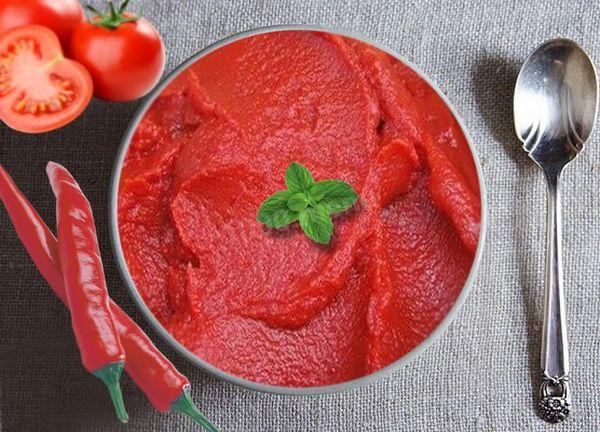
It is better to pass the finished mass through a juicer so that solid particles do not fall into the workpiece. The resulting juice is boiled in a saucepan until thick. After 30 minutes over low heat, the mass of tomatoes will be halved. In the middle of cooking, add salt to taste, stirring it to dissolve. It remains to transfer the hot product to scalded jars and roll up with iron lids.
Using a blender
The sauce is quickly prepared by grinding the tomato slices in a blender. But you will have to carry out the operation several times, draining excess fluid. When all the fruits are milled, they transfer the mass into a saucepan and boil over low heat until thickened. It should decrease in volume by 4 times.

In a multicooker
For busy housewives, a recipe using a multicooker is suitable. You won't take a lot of tomatoes in this case, because the capacity in the pan is small. 1-2 kilograms of fruits are cut and put into a multicooker. The "Extinguishing" mode and the time of 1 hour are set on the display. Now you need to rub a lot of tomatoes through a sieve to remove seeds and skin.
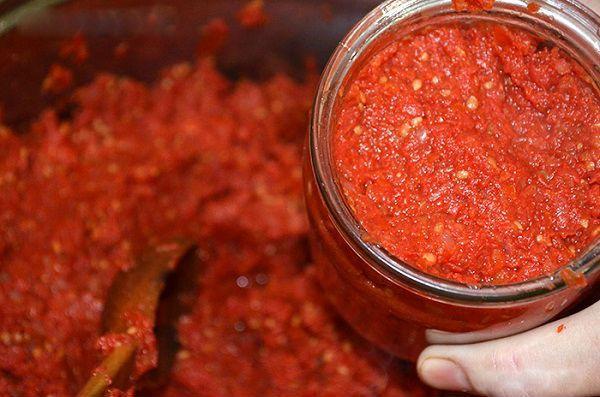
The resulting pasta must be cooked again for 25 minutes in a slow cooker. But the mode will be set to another - "Baking". When the product thickens, stir it constantly in a saucepan. The hot paste is placed in jars, covered with lids. It is better to sterilize the workpiece in a water bath for 15 minutes.
Through a meat grinder
To grind tomatoes, use a meat grinder. Pieces are passed through it, then rubbed through a sieve, removing the seeds. Boil for a long time over low heat. At the end, they are laid out in banks. The product is rolled up immediately. You can add salt to the paste or leave the workpiece to consist only of tomatoes.
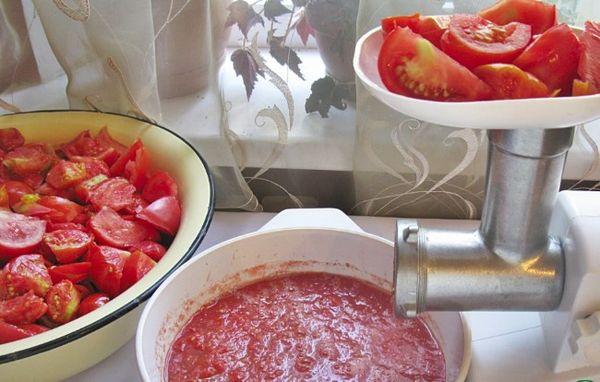
In the oven
For this recipe, first boil the tomato slices in a saucepan. The next stage consists of rubbing the mass through a sieve, otherwise pieces of peel and seeds will remain in it. Salt is poured into it, which is taken for 4 kilograms of fruit 4 tablespoons. Pour 100 grams of olive oil.
All components should be in a deep baking sheet, where they are mixed. A container with mashed tomatoes is placed in the oven and heated to 200-220 degrees. It is necessary to close the cabinet and keep the mass for boiling for 2-3 hours with constant stirring. Then they are laid out in banks and rolled up.
Through a juicer
Using a juicer to make tomato paste can reduce effort and time. It is possible to cook a large amount of sauce here, since they take 9-10 kilograms of ripe fruits.
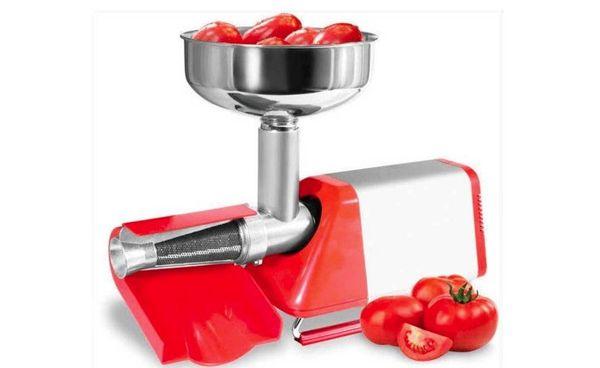
Before loading into the juicer, the tomatoes cut into pieces are boiled for 30 minutes after boiling in a saucepan. Having passed through the device for making juice, they are again poured into a saucepan, putting it on low heat. The mass will gradually boil down with stirring for 1.5-2 hours.
In the middle of cooking, add salt - 2 tablespoons.At the end of the procedure, pour the hot mixture into the jars.
Without sterilization
You can cook tomato paste for the winter without sterilization. But for this it is necessary to take ripe fruits that do not have damage and rot. They should be cut into pieces and boiled for a while.
When they become soft, rub the mass through a sieve to remove the seeds and skin. At the end, the mashed potatoes are suspended in a bag of gauze or thin cotton cloth over a basin, leaving for 5-6 hours. When all the liquid is gone, you can put it in jars and put in a cold place.
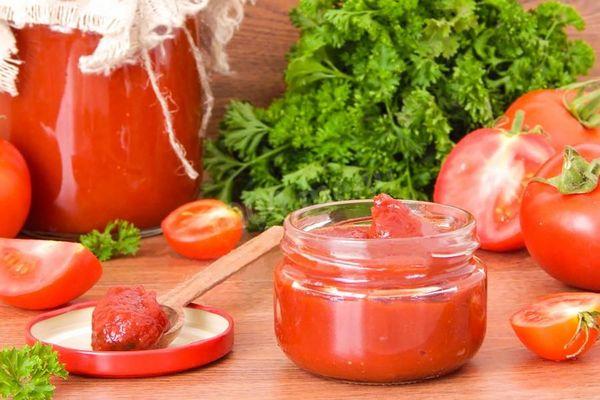
Tomato sauce will be tastier if you add mustard and ground pepper to it. To do this, after wiping through a sieve, the mashed potatoes are poured into a saucepan, where there is heated vinegar (200 ml), mixed with allspice and hot peppercorns, bay leaves. Cook everything together until the pasta is halved.
Then add salt, sugar and mustard powder. It is necessary for the dish to boil and boil for 5 minutes. The workpiece is laid out in jars and added to soups in winter.
Spicy hot pepper pasta
For those who love hot sauces, a recipe made from:
- 6 kilograms of tomatoes;
- 200 grams of hot pepper pods;
- 300 grams of garlic;
- salt - 1.5 tablespoons.
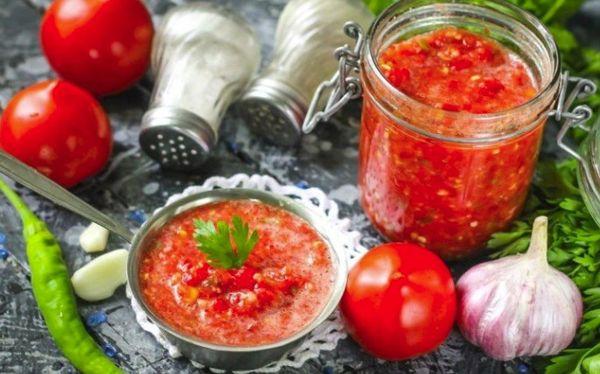
Grind vegetables in a food processor or mince them. It remains to rub through a sieve and send the resulting spicy puree to the pan. Keep on fire until the paste becomes thick. It is stored in glass containers under iron lids.
Storage rules
Like all preparations for the winter, it is necessary to store the tomato paste in a cold place. The temperature in the basement should be between 2-4 degrees Celsius. The humidity in the room is no more than 85-90%, otherwise the covers will begin to rust and mold will appear on top.
It is safer to refrigerate the non-sterilized product.
Shelf life
The most useful product for the winter will be the one that has been prepared recently. You cannot store the paste for several years. It acquires more acid over time and becomes tasteless. If mold appears inside the jar, then using such a paste is unhealthy.
